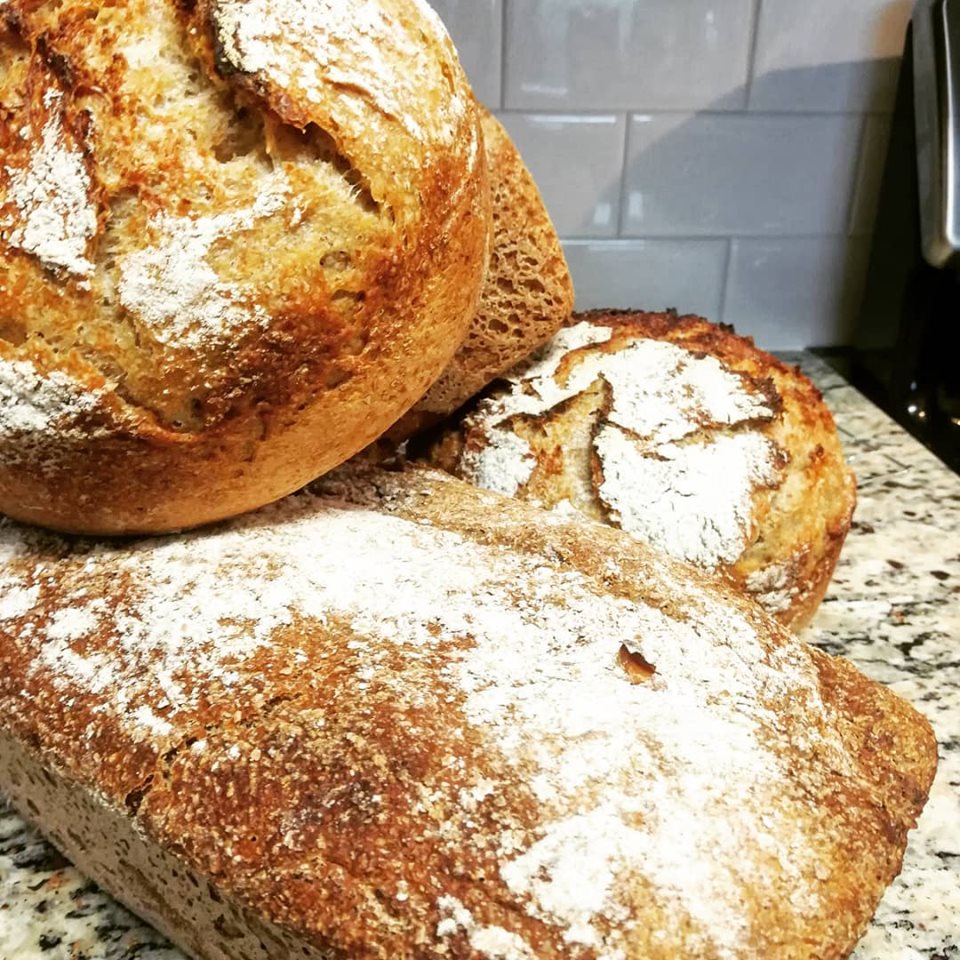Description
We’re rolling our dough to produce Austin artisan bread and nobody says “No” to our crispy, freshly made artisan bread.. We have a yeast over 50 years old and we keep it like our kid. Want to read our interesting story from our granddad to today click https://doughnroll.com/about-us/
Our artisan cold fermentation bread fermented with our good-old yeast, and we are rolling our dough with artisan techniques.
We’re using UNBLEACHED flour to produce our bakery goods and also our breads. Austin Artisan Bread, producing by local ingredients in Austin.
Each of our artisan bread weighs 1.5lbs (Approx.) and only includes flour, water, and salt. (We don’t write our starter yeast because the only ingredients are flour and water) And we ferment its dough more than 24 hours.
Allergen Warning for this product : Wheat
So why is Sourdough bread healthier than ordinary bread?
However research, often linked with IBS, indicates that the principal storage of phosphorus in seeds is found in the bran part of wheat and is called phytic acid can be a cause for digestive discomfort and bloating. In humans, and animals with one stomach, this phytic acid inhibits enzymes which are needed for the breakdown of proteins and starch in the stomach. It is this lack of enzymes which results in digestive difficulties. Ironically, commercially produced whole grain bread, generally perceived as “healthy,” is often the worst thing a person with a wheat intolerance should eat.
Luckily we have an ally, sourdough. The wild yeast and lactobacillus in the leaven neutralise the phytic acid as the bread proves through the acidification of the dough. This prevents the effects of the phytic acid and makes the bread easier for us to digest. These phytic acid molecules bind with other minerals, such as calcium, magnesium, iron and zinc, which make these important nutrients unavailable to us. Long slow fermentation of wheat can reduce phytates by up to 90%. There is an interesting study that compares the effects of different leavens (yeast, sourdough, and a mixture of both) on phytic acid degradation which assessed the repercussions of phytic acid breakdown on phosphorus and magnesium solubility during bread-making, that showed Sourdough fermentation was much more efficient than yeast fermentation in reducing the phytate content in whole wheat bread (-62 and -38%, respectively). The lactic acid bacteria present in sourdough enhanced acidification, which lead to increased magnesium and phosphorus solubility.
Simply put the phytase enzymes released by the yeasts as the dough acidifies effectively pre-digests the flour, which releases the micronutrients and in turn reduces bloating and digestive discomfort.
Sourdough bread also takes longer to digest; studies have shown that rye flour added to sourdough can help regulate blood sugar levels which helps ward off diabetes. ( https://www.sourdough.co.uk/why-is-it-that-i-can-digest-sourdough-bread-and-not-commercial-bread/ )


